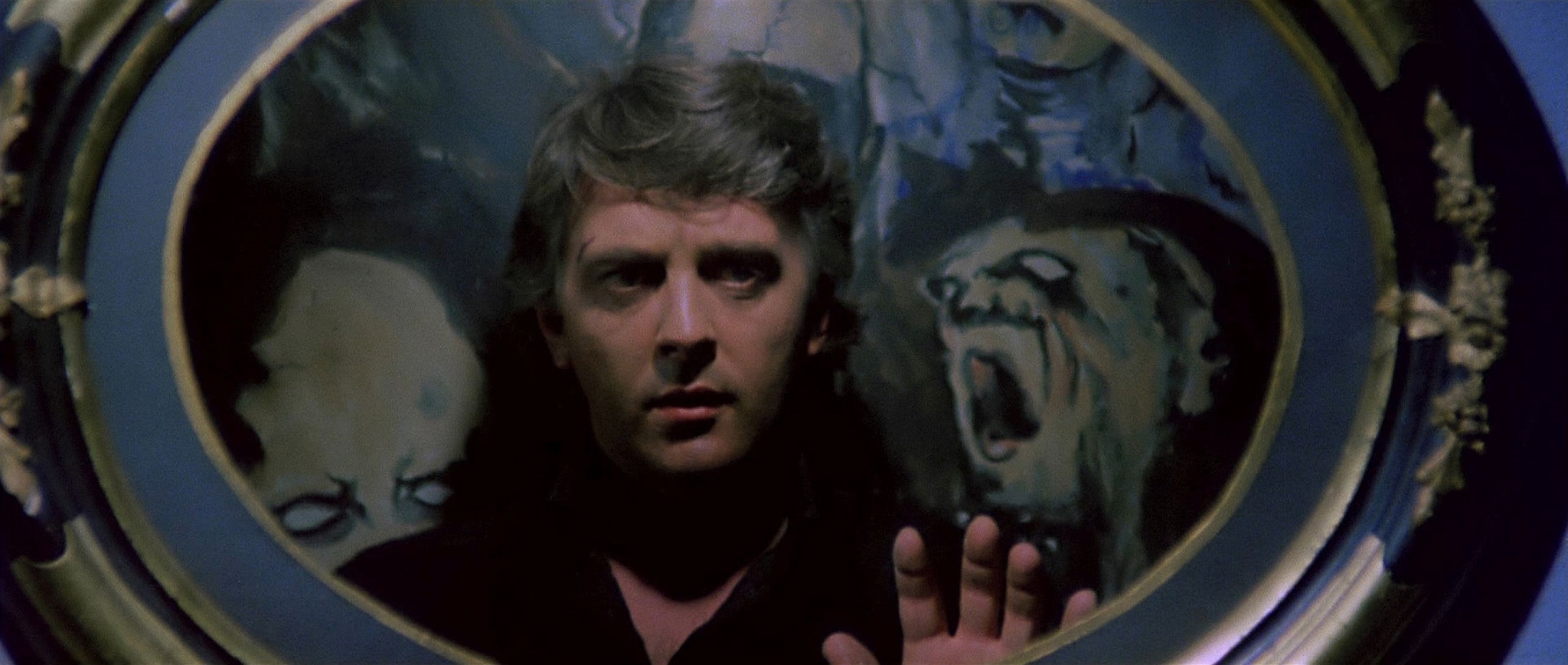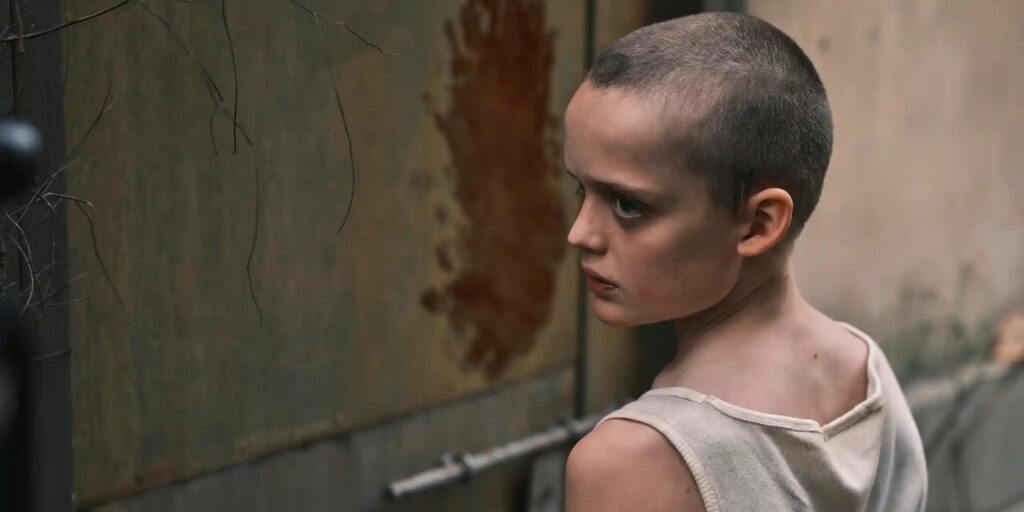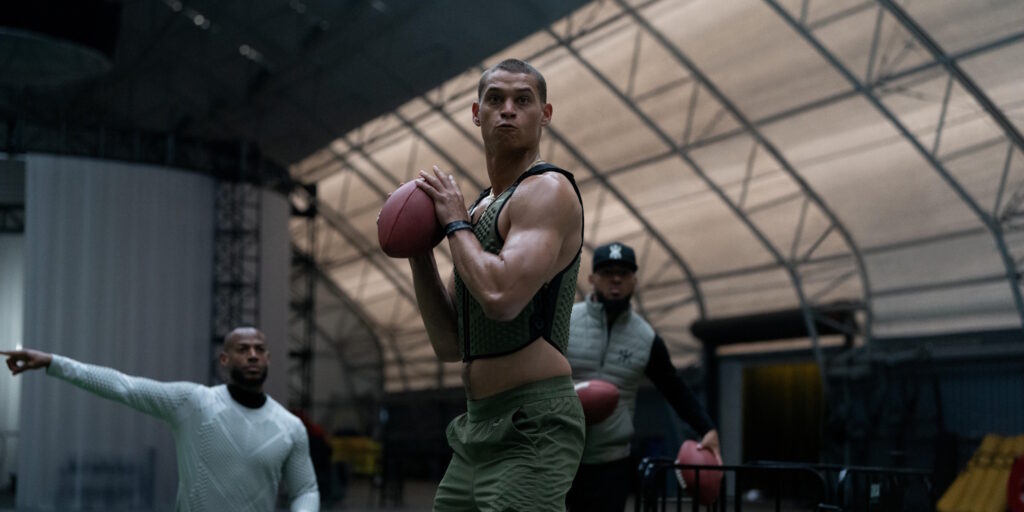[Note: An earlier version of this article was originally published at Cinema St. Louis’ The Lens. This version has been revised, updated, and expanded.]
At their worst, Dario Argento’s films are eye-glazingly boring. At their best, they are visual feasts of baroque manifest content and complex explorations of the viewer and the viewed. That mastery seemed to plummet before the turn of our current century, making a consideration of the filmmaker’s entire oeuvre a potentially depressing exercise. Still, Argento was “elevating” horror into art film before A24 found Ari Aster, and his filmography makes for a fascinating auteurist study in how an idiosyncratic viewpoint can produce wildly varying results.
Although his critical and popular standing has been diminished by his lazy later work, interest in prime Argento is evergreen. These days, almost no self-respecting repertory house goes without a yearly screening of Suspiria or Deep Red, or maybe even Phenomena for the bug lovers. (Webster University Film Series is paying their Suspiria dues on Thursday, April 7, with the latest 4K restoration of what’s surely the director’s most well-known feature.) Dark Glasses, the Maestro’s first feature since the appalling Dracula 3-D, was released last year and, for some, it marked a return to form. The Take-Up presents an updated ranking of Dario Argento’s now 25 features (and feature-ishes) – originally published in 2018 for Cinema St. Louis’ The Lens and timed to the release of Luca Guadagigno’s anti-Argento Suspiria remake – with his latest shocker in tow.
25. Dracula 3-D (2012)
Digital flies swarm around the townsfolk in Argento’s sole 3D outing, as if attracted to this rotting garbage heap of a movie. The director’s Skinemax Stoker riff is his worst, a lifeless aberration that would be ranked among the least accomplished films ever made if it managed to be anything. The imprint of the once-masterful filmmaker is nary anywhere, and although the saturated Victorian look points toward a winking Hammer Films homage, the result begs the question if anyone involved has ever seen a movie at all.
24. The Phantom of the Opera (1998)
Before mounting his Dracula update, someone should have told Argento to stay out of classic horror territory, as his previous take on a beloved gothic property represented the death knell for former glory. His The Phantom of the Opera opens with psychic sewer rats rescuing a baby in a basket. One might attempt to find some gonzo zoology similar to that found at the heart of Phenomena, but instead, Argento lazily piles on inelegant, gory set pieces on top of lackluster production and acting. The Phantom’s (Julian Sands) awkward fever-dream fantasy in the middle of the film could have secured a MST3K-level condescending fandom, but the film around it has rightfully been forgotten.
23. Giallo (2009)
A jaundiced film with a jaundiced serial killer, Giallo was a stab at recapturing former success in the titular genre, which has become synonymous with the director’s name. In the process, an uninspired Argento turns in a degraded facsimile of his better features, their inspirations, and even those that were inspired by them. Star Adrien Brody – also at a low-low – sits uncomfortably in the tension between Mario Bava’s Blood and Black Lace (1964) and the torture-porn violence of Saw (2004).
22. The Mother of Tears (2007)
The finale of Argento’s supernatural “Three Mothers” trilogy finds the director attempting to strip away layers of dust and lacquer by finishing up what was left unresolved in Suspiria and Inferno. Unfortunately, the modicum of campy fun quickly devolves into irritating garishness and grotesquery, and – especially when compared to the first two films in the trilogy – leaden direction and scripting.
21. The Card Player (2004)
A giallo for the nascent digital age, this The Silence of the Lambs (1991) knockoff has grown increasingly silly as the years march on, largely due to its focus on video poker as a suspense device. Dipping into his previously deep well of complicity and voyeurism, Argento does flex a little cinematic muscle in the police proceedings. However, by the time the killer takes advantage of lead investigator Anna’s (Stefania Rocca) trauma, Argento re-purposes one of cinema’s oldest tropes by tying a woman to a train track, and tying his viewers down with utter tedium.
19-20. “Pelts” (2006) and “Jenifer” (2005)
Showtime’s Masters of Horror was a welcome reprieve for many genre filmmakers who could no longer get big-screen work produced and/or widely distributed. The Italian master churned out two episodes for the short-lived anthology series. “Pelts” is a much gorier (it’s possible) and less interesting reiteration of “The Black Cat,” whereas “Jenifer” proves only slightly more stimulating. The latter was written by star Steven Weber, whose material gave Argento something meaty to chew on. Although its intermingling of sex and violence is hardly fresh, the director challenges viewers to identify with a man reaching into sexual oblivion via a siren with a mean flesh-eating mug. The direction, however, lacks any bite.
18. Do You Like Hitchcock? (2005)
A poster of Brian De Palma’s Femme Fatale is on display in the video store central to the murder-swapping narrative of Do You Like Hitchcock?. It could be either a winking nod to another Hitchcock acolyte or a middle finger to him for supposedly copping Argento’s own cops of Hitch, as some have accused. Either way one chooses to interpret it, the gesture only serves to remind that the Master of Supsense’s cinematic language is best deployed with inspiration and full-throttled creativity. De Palma’s life-affirming dream heist has those, Argento’s made-for-television slasher only dreams about them.
17. The Five Days (1973)
The Five Days is the biggest outlier in Argento’s canon. A political farce set during the Austrian occupation of Italy, it resembles a twisted hybrid of Sergio Leone’s Duck, You Sucker! (1971) and Once Upon a Time in the West (1968). (The latter having been written by Argento, Leone, and Bernardo Bertolucci.) Argento walks a tightrope between broad comedy and brutal violence, and, more often than not, he falters. Still, such a performance is sometimes thrilling to watch, especially when they’re in peak form.
16. Sleepless (2001)
Sleepless is David Fincher’s Zodiac (2007) as giallo, absent the ecstatic joy over the creator’s cinematic apparatus. While containing hallmarks of the director’s previous gialli, the decades-spanning police procedural is never truly elevated by its occasional stylishness. Given that Argento casts master Swedish actor Max von Sydow against less-capable Italian thespians, it works as an interesting case study of performance in Argento’s work and the broader genre. Sleepless requires a suspension of disbelief in the uncanny valley between actual human behavior and the often-dubbed, wide-eyed nature of the characters who populate his worlds.
15. Dark Glasses (2022)
Credit may be due to a peak between troughs on the waves of Argento interest or cinematographer Matteo Cocco’s studious understanding of what makes a classic Argento frame, but Dark Glasses is almost the return to form many hoped it would be. The signposts are there: black-gloved killers, bumbling police, sight and vision, flesh-hungry dogs, the gee-whiz detective work by the protagonist, and of course, plenty of open carotid arteries. The truly berserk is kept at bay, which prevents Dark Glasses from fully capping a career on a high note. (Argento is 82, after all.) However, something else more shocking often rises to the top: tenderness. (Argento is 82, after all).
13-14. “The Tram” and “Eyewitness” (1973)
Door Into Darkness represents Italian television’s attempt to brand the director as the Hitchcock of the 1970s with a four-episode anthology series that only lasted for one season. Argento helmed two episodes himself, proving his blades sharp enough for making smaller cuts. Among his television work, “The Tram” most resembles Argento’s big-screen features. It’s a fairly standard detective mystery heightened by the filmmaker’s preoccupation with cinematic space. A literal investigation of movement within a frame unfolds when it’s discovered that the bend of a city bus allows for a murder to take place. Shades of Vertigo and Rear Window appear when the lead investigator ropes his girlfriend into dangerously replaying the night of the crime. This leads to the bravura climax set in a train station, where gorgeously gliding camera movements abound.
In “Eyewitness,” a woman who stumbles onto a murder and then narrowly escapes being killed herself is forced to replay the events in her mind after the police are unable to turn up a body. Her own personal life isn’t quite what it seems to be; it turns out that it’s her husband and his girlfriend who are stalking her in an attempt to pin the murder on her. This Gaslight redux is mostly notable as a microcosm of the director’s interest in perspective and sight. The uncredited Argento took over this episode from Roberto Pariante – his A.D. on The Bird with the Crystal Plumage – and “Eyewitness” retains a meta-layer of perspective shifts, reflecting Argento’s use of another’s footage for his own ends.
12. Trauma (1993)
Trauma could be the name of any of Argento’s horror efforts, but it’s particularly apt for his giddily wonky English-language feature debut. His European sensibilities create a confounding dissonance within it, as the characters’ past sins certainly amount to one sticky web of tangled issues. This is especially true of the protagonist, played by Asia Argento, making her debut in her father’s filmography. Stuffed with whack-a-doodle, half-baked ideas seemingly conjured by Piper Laurie’s insidious psychic, it’s best enjoyed as a purely visual display of the director’s unique abilities with his camera.
11. “The Black Cat” (1990)
With adapting “The Black Cat” for the Edgar Allan Poe diptych Two Evil Eyes – the other half is helmed by George A. Romero – Argento mounts one of his most audacious opportunities to work through the limits of filmic depictions of violence. Harvey Keitel is an abusive crime-scene photographer who becomes one of the most deplorable murderers in Argento’s oeuvre when he murders his girlfriend and walls her body up in their Philadelphia brownstone. A diabolical figure who configures his own comeuppance via an unkillable feline, he’s the inverse of the obsessive wall-crumbler played by David Hemmings in Deep Red. “The Black Cat” feels like an admission of guilt for a director sometimes accused of deep misogyny, but forcing audience self-identification with the killer also knowingly fingers the viewer as complicit in these acts.
10. Phenomena (1985)
It may be unfair to compare this bewitching oddity to Argento’s much better Deep Red, but Phenomena operates in a manner similar to the latter film, in that it chronicles the seemingly disparate horror preoccupations of its maker. Ultimately, he presents a thesis on humanity’s animal instincts and its role in the food chain, complete with insects controlled by a human psychic, an entomologist with a live-in chimpanzee assistant, and a serial killer with a thirst for blood. The zoological alchemy results in a much more unsettled mix than Deep Red, but it’s still a worthy entry for its sheer weirdness.
9. Inferno (1980)
Inferno was an attempt to take Suspiria to a global scale, extending the former film’s grand conspiracy of witches to New York City and Rome. It’s closer to the gonzo Phenomena than its origin point but still contains some of the oddest and yet most satisfying moments of horror in his canon, including a dive into the spirit-infected waters of underground NYC; a gross-out scene in which an antique dealer’s body is consumed by rats; and the satanic insanity of the climax, which the director would attempt to duplicate in The Mother of Tears, to lesser results.
6-8. The Bird with the Crystal Plumage (1970), Four Flies on Grey Velvet (1971), and The Cat o’ Nine Tails (1971)
Credit for the invention of the giallo genre goes to Argento’s horror hero Mario Bava, who introduced world cinema to the pulpy Italian-novel subgenre with The Girl Who Knew Too Much in 1963. However, Argento’s first three films constitute the apex of the form. He uses the standard ingredients – a black-gloved slasher, protracted stalk-and-kill set pieces, mingling sex and death in a labyrinthine plot – but with his “Animal Trilogy” he elevated the genre into more artful territory. Bird flips the skeezy gender politics of the giallo on its head; Four Flies extends notions of voyeurism into more murky waters; and Cat convolutes its murder mystery to a point of deconstructionist abstraction. They’re all incredible, dazzlingly stylish starting points for ideas Argento would soon perfect.
5. The Stendhal Syndrome (1996)
The Stendhal Syndrome is the director’s closest approximation of Vertigo (1958): a bifurcated narrative pitting the demure brunette against her cool-blonde self. Masculinity at its most destructive violently rips her psyche into two as she sublimates her trauma into bloody revenge. Her relationship to art, with the titular affliction, reflects her already unsteady relationship with reality, making her perpetuation of her own abuse even more tragic. This is the least “fun” entry in top-tier Argento, with the added awkwardness of the repeated rape and sexualization of a character played by his own daughter. If setting that aside is possible, however, The Stendhal Syndrome is also the last of the director’s truly great features.
4. Tenebre (1982)
Tenebre anticipated De Palma’s Body Double by two years. Both films act as bombs lobbed at the critical establishment, who mostly only saw misogyny and masturbatory style from their respective makers. With this gruesome twosome, they each doubled down on these aesthetic markers with acidic cynicism, counter-subverting their own previous subversions while retaining a cinematic glee. It doesn’t come as a shock when the killer is revealed to be the novelist hero (Anthony Franciosa). After all, he’s already stuffed pages from his book (titled Tenebrae) into one of his victim’s mouths. The film intelligently tackles the role of the author within his own work, as well as his responsibility in releasing it into the world. Its self-reflexive moments cheekily reveal themselves on multiple viewings, accumulating layers of meaning that reveal the agony and the ecstasy of creation. Made complex with narrative, thematic, and architectural design, Tenebre also features the most original and danceable score in Argento’s filmography, by his frequent collaborators Goblin.
3. Opera (1987)
Spectacle and spectatorship are dangerously intertwined in the aesthetics of Opera. The killer is an Argento stand-in here, taping needles under his audience’s eyelids in an effort to force them through torture and therefore some sort of catharsis. Therefore, Argento fascinatingly implicates himself as a perpetrator of violence while using his skills as a master filmmaker to seduce the viewer into giddy awe of his violent Rube Goldberg machines. Throughout, he never loses sight of the trauma he inflicts in his artist-as-puppet-master role; here, his heroine succumbs to the cycle of violence in the film’s final moment of self-reclamation.
2. Suspiria (1977)
Suspiria stands alongside Orson Welles’ Citizen Kane (1941) and Stanley Kubrick’s 2001: A Space Odyssey (1968) as one of the most visually stunning cinematic creations ever mounted. This disco-tuned fairy tale was fashioned by a creator firing on all cylinders, using every square inch of the frame to showcase his cinematic brawn. To enter it is to suspend all notions of reality and surrender one’s psyche to a dream-like experience. Suspiria is so visually spellbinding that its artfulness almost upends the All of Them Witches fairy-tale plot. However, the film’s fury of neon light works like the dance-school instructors’ poisoning of American student Susie (Jessica Harper), infecting the viewer’s nervous system and enveloping them in its conspiratorial web.
1. Deep Red (1975)
Deep Red is Argento’s supreme compendium, chronicling all of the director’s preoccupations with precision and playfulness: his chosen medium’s ability to alter reality within spaces and memories; excavations of the past to reveal an always-present buried paradigm; and the dialectical nature of gender, sex, and violence. It’s all the more miraculous that it appeared so early in his career – a kind of pronouncement of mastery carefully spinning webs outward toward the future. Thrusting the audience through the red-velvet curtains onto an arch proscenium in its opening, confidently aware of its own importance and giddy filmic prowess.
Hitchcock’s other great acolyte, Brian De Palma, is compared to Jean-Luc Godard more often than is his Italian cohort. Yet Deep Red showcases Argento’s postmodern deconstruction of symbols throughout art, history, and cinema – much like the early “movie-movies” from Godard. Casting David Hemmings as the protagonist whose perception and memory become warped as he investigates a murder is to put a fine point on Deep Red‘s interpolation of Antonio’s Blow-Up (1966). However, the film never feels slavish to cinematic history, creating contrasts with the inexorable way that the characters’ pasts dictate their fates. A remarkably dreamy and violent puzzle box featuring dazzling set pieces buttressed by the romantic comedy between Hemmings’ jazz musician and his girl Friday, Deep Red is at once wonky and perfectly calibrated, one of cinema’s unique masterpieces, featuring a final image as haunting as any in film history.




